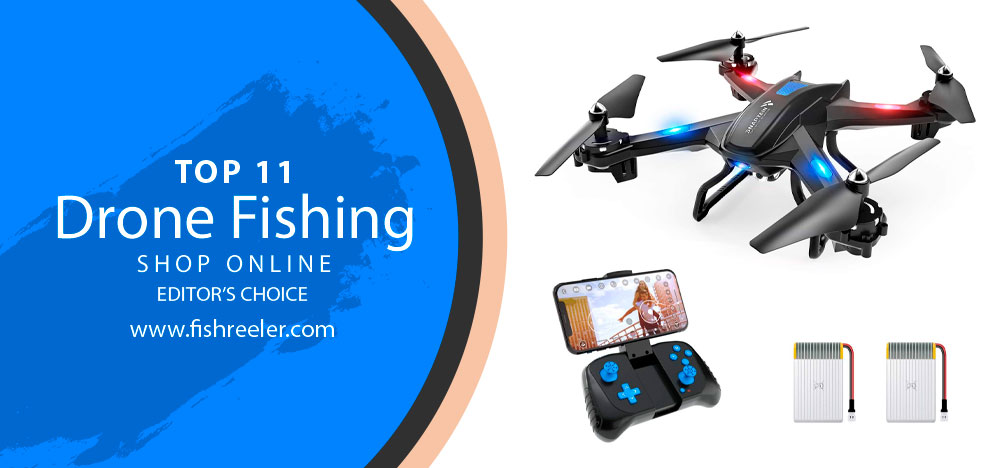
Have you ever found yourself standing on the shore, staring out at the vast expanse of water and wondering what lies beneath the surface? Have you ever wished that you could get a bird’s eye view of the water to know exactly where the fish are hiding? Well, now you can with the latest trend in fishing technology: drone fishing.
The Ultimate Guide to Drone Fishing: Tips and Tricks for Aerial Anglers
Drone fishing is a revolutionary new way to fish that allows you to scout for fish from the air and drop your bait in areas that were previously unreachable. Using a drone for fishing not only makes the experience more fun and exciting but also increases your chances of catching fish.
Imagine being able to see the exact location of fish in real-time and being able to drop your bait right on top of them. With drone fishing, this is now a possibility, and it’s changing the game for anglers everywhere. So, if you’re looking to up your fishing game and experience the thrill of catching more fish, read on to discover everything you need to know about drone fishing.
From Above and Beyond: Discover the Benefits of Drone Fishing
| Benefit | Explanation |
|---|---|
| Precision | With a drone, you can drop your bait with pinpoint accuracy, increasing your chances of catching more fish. |
| Scout out new fishing spots | A drone allows you to explore new areas that may not be accessible by foot or boat, giving you a new perspective on fishing. |
| Increased safety | A drone can help you identify potential hazards in the water before casting your line, ensuring a safer fishing experience. |
| Fun and excitement | Flying a drone is already fun, but adding the thrill of catching fish takes it to a whole new level of excitement. |
| Increased catch rate | By scouting out the best spots and dropping bait with precision, you’re more likely to catch more fish and have a successful day on the water. |
Popular models of drones that are commonly used for fishing:
| Model | Key Features |
|---|---|
| DJI Mavic 2 Pro | Hasselblad camera, 31-minute flight time, 8km range |
| DJI Phantom 4 Pro | 4K camera, 28-minute flight time, 7km range |
| DJI Mavic Air 2 | 4K camera, 34-minute flight time, obstacle avoidance |
| PowerVision PowerRay | 4K camera, 4-hour battery life, fish-finding sonar |
| SwellPro SplashDrone 3+ | Waterproof design, fishing line release mechanism |
| DJI Mavic Mini | Lightweight, 30-minute flight time, 2.7K camera |
| DJI Inspire 2 | Dual-camera system, obstacle avoidance, 6K cinema cam |
| Autel Robotics Evo II | 8K camera, 40-minute flight time, 9km range |
It’s important to do your own research and choose a drone that fits your specific needs and budget. Look for features such as long battery life, GPS positioning, obstacle avoidance, and a sturdy build that can withstand water and wind.
Breaking Down the Drone Fishing Gear: What You Need to Get Started
A table of the basic equipment you need to start drone fishing:
| Equipment | Description |
|---|---|
| Drone | A drone with a suitable payload capacity to lift the fishing rig and bait. |
| Fishing rig | A rig that attaches to the drone and holds the fishing line and bait. |
| Bait | A suitable bait for the type of fish you want to catch. |
| Fishing line | A strong and durable fishing line that can handle the weight of the bait and fish. |
| Fishing reel | A fishing reel to reel in the line and the caught fish. |
| Drone remote controller | A remote controller to operate the drone. |
| Battery | A spare battery for the drone, as drone fishing requires a lot of power. |
| Safety gear | Safety gear, such as gloves and eye protection, to protect yourself from potential accidents. |
| Landing pad | A landing pad to safely land the drone and prevent damage. |
Drone fishing is an exciting and challenging activity that requires proper equipment to ensure a successful and safe experience. The drone is the most critical piece of equipment, as it needs to be strong enough to lift the fishing rig and bait. The fishing rig should be sturdy and well-built to hold the fishing line and bait securely.
Bait and fishing line selection are also crucial as they need to be suitable for the type of fish you want to catch. The fishing reel should be easy to use and have a smooth drag system.
Drone fishing is a technique that involves using a drone to fly a fishing line and bait to a desired location for catching fish. A step-by-step guide on how drone fishing works:
- Choose the right drone: To use a drone for fishing, you need to have a drone that is powerful enough to lift your fishing gear and fly for a reasonable amount of time. Choose a drone with a high payload capacity, long battery life, and good stability in windy conditions.
- Attach a release clip: A release clip is a small device that attaches to the drone and holds the fishing line. It has a mechanism that releases the line when triggered, allowing the bait to drop into the water. Attach the release clip securely to the drone according to the manufacturer’s instructions.
- Connect the fishing line: Connect the fishing line to the release clip using a swivel or a knot that is strong enough to withstand the weight of the bait and the fish. Make sure the line is not twisted and is straightened out before attaching it to the clip.
- Add bait: Attach the bait to the end of the fishing line. You can use different types of bait depending on the type of fish you want to catch. Common baits include live bait, artificial lures, or cut bait.
- Launch the drone: Launch the drone and fly it to the desired location. Make sure to fly the drone within the legal limits of your country and state, and avoid flying over people or wildlife.
- Release the bait: Once the drone is in position, trigger the release mechanism on the clip to drop the bait into the water. You can control the altitude and speed of the descent by adjusting the drone’s position and throttle.
- Reel in the line: Once the bait is in the water, you can reel in the line manually or using an automated reel system. Keep an eye on the drone’s battery level and adjust the flight time accordingly to avoid crashing or losing the drone.
- Catch the fish: When a fish bites the bait, the fishing line will pull the release clip and trigger the mechanism to release the line from the drone. You can then reel in the line and catch the fish.
Taking Your Fishing Game to New Heights: How to Use a Drone for Fishing Success

Drone fishing safety: what you need to know before you take off. Tips for novice anglers who want to try drone fishing:
- Familiarize yourself with local drone regulations: Before you start drone fishing, make sure you know the local regulations related to drones. Some areas may have restrictions on where drones can be flown and how they can be used.
- Choose the right drone: Select a drone that is capable of lifting your fishing gear, has a long battery life, and can be controlled easily.
- Use a fishing rig designed for drone fishing: Invest in a fishing rig that is specifically designed for drone fishing. This will ensure that your bait and hooks are securely attached to the drone and won’t come loose during flight.
- Check the weather conditions: Make sure to check the weather forecast before you go drone fishing. Avoid flying your drone in windy or stormy conditions, as it can make it difficult to control.
- Choose the right location: Look for a location that is suitable for drone fishing. Avoid areas with a lot of obstacles, such as trees or power lines, and make sure that you have enough space to fly your drone safely.
- Practice flying your drone: Practice flying your drone before you go drone fishing. This will help you get comfortable with the controls and ensure that you can safely fly your drone in the fishing location.
- Be patient: Drone fishing can take some time, so be patient. It may take a few tries to get the right positioning and lure the fish.
- Be aware of your surroundings: Always be aware of your surroundings when drone fishing. Keep an eye out for other people or boats in the area, and make sure that you are not disturbing any wildlife.
- Stay safe: Finally, always prioritize safety when drone fishing. Make sure to follow all safety guidelines and precautions to prevent accidents and injuries.
Fishing Like a Pro: How Drone Technology is Changing the Game for Anglers Everywhere
The use of drones in fishing greatly simplifies the process of finding a place with a lot of fish. In this article, we’ve put together a complete guide to drone fishing for you, including a list of the 11 best drones for anglers.
We’ve personally tested and launched each model to provide you with an honest and balanced view of each unit. Of course, among them, we chose the best drone that we’ll always take with us on fishing now – the Swell Pro Splash Drone 3+, which was specially created for professional fishing, unlike most drones that are afraid of water.
Fly High and Reel in Big: The Top 11 Drones for Fishing
Let’s get straight to the point and take a look at the 11 best drones for fishing. If you’re a beginner and you don’t understand how drones work in fishing – head down to the bottom of the article, there we have written a detailed guide for you!
1# DJI Mavic Air 2 Fishing Drone – Best Value For Money
The DJI Mavic Air 2 is a top-of-the-line drone quadcopter that is packed with features that make it one of the best drones on the market for aerial photography and videography. With a 48MP camera, 4K video capabilities, and 8K hyper-lapse, this drone is capable of capturing stunning high-quality footage from the air.
The camera on the DJI Mavic Air 2 is one of its standout features, with a 48MP sensor that can capture incredibly detailed images and videos. It can shoot 4K video at 60 frames per second, ensuring smooth, high-quality footage even during fast-paced action scenes. Additionally, the drone features an 8K hyper-lapse mode, which allows you to capture stunning time-lapse videos with incredible detail and clarity.
The DJI Mavic Air 2 is also incredibly easy to use, thanks to its intuitive controls and streamlined interface. The drone can be controlled with the DJI Fly app, which is available for both iOS and Android devices. The app provides access to a range of intelligent features, including ActiveTrack, which allows you to automatically track and follow a subject, and QuickShots, which lets you capture professional-quality footage with the touch of a button.
In addition to its impressive camera and user-friendly features, the DJI Mavic Air 2 is also incredibly portable. Its foldable design allows it to be easily packed away in a compact carrying case, making it perfect for taking on the go. The drone’s lightweight construction and aerodynamic design also make it easy to maneuver and fly in tight spaces.
Other notable features of the DJI Mavic Air 2 include its long battery life, which provides up to 34 minutes of flying time on a single charge, and its obstacle avoidance technology, which helps prevent collisions with objects and other people.
Highlighted features:
- 4K 48MP Camera
- 3-Axis Gimbal
- Flight Time 34 min
- Foldable
- Camera hold on the object function
- Distance up to 6 miles
Drones aren’t cheap devices, so if you don’t want to spend a lot of money, but you want a drone with all the necessary features that won’t break in a month or two, then the DJI Mavic Air 2 is the one for you. The drone has a fairly powerful camera capable of shooting in 4K resolution, so even at high altitudes, it’s able to maintain a high-quality image. But stabilization is not the best here – often the image on your screen will shake.
The best part about this drone is that almost all smartphones, even the oldest ones, support it. The drone comes complete with spare wires, blades, and a charger. Actually, the drone comes with a rich package. The drone folds easily and when folded can easily fit into a small backpack or bag. The plastic from which the drone is made is hardened, so even if it falls from a great height, most likely it’ll be able to continue working and important components won’t be damaged. By the way, the average flight time for this model is about half an hour. This is a pretty high figure.
Overall, the DJI Mavic Air 2 is a mid-priced drone with a great camera, great flight times, and flexibility in supported devices.
2# DJI Mavic Mini Drone FlyCam – Best Compact Drone
The DJI Mavic Mini is a compact drone quadcopter that is perfect for capturing stunning aerial footage on the go. With its 2.7K camera, 3-axis gimbal, and GPS capabilities, this drone is packed with features that make it one of the best drones in its class.
The camera on the DJI Mavic Mini is capable of capturing high-quality 2.7K video and 12MP photos. The camera is mounted on a 3-axis gimbal, which helps stabilize the footage and ensures smooth, professional-quality shots. The drone’s camera also features a 1/2.3-inch CMOS sensor, which helps capture clear and vibrant images even in low-light conditions.
The DJI Mavic Mini is incredibly easy to use, thanks to its user-friendly controls and intuitive interface. The drone can be controlled using the DJI Fly app, which is available for both iOS and Android devices. The app provides access to a range of intelligent features, including QuickShots, which allows you to capture professional-quality footage with the touch of a button.
In addition to its impressive camera capabilities, the DJI Mavic Mini also features GPS technology, which helps it maintain its position in the air and provides accurate positioning data. This makes it easy to track the drone’s location and ensures that it stays stable during flight.
The DJI Mavic Mini is also incredibly portable, with a compact and lightweight design that makes it easy to take on the go. The drone can be easily folded up and stored in a carrying case, making it perfect for travel and outdoor adventures.
Highlighted features:
- 12 MP 2.7K Camera
- Foldable
- 30 Min Flight Time
- Weight 0.55 lbs
- 3-Axis Gimbal
For many anglers, the compactness of the drone is very important. This model is the most compact and lightest on the market. However, the DJI Mavic Mini has nearly the same specs as its big brother, the DJI Mavic Air 2. When folded, this drone will be the size of a brick and weigh just 0.55 pounds. The best part is that regardless of the laws of your state, you can fly this drone anywhere without a license because this drone is too small to be registered.
The drone has a good 12 MP camera and can shoot HD video at 2.7K resolution. Not 4K, but the picture is still pretty good. The flight time remained the same – half an hour, which is quite a lot in comparison with similar drones. And the supported devices haven’t changed either, the drone app is suitable for almost any smartphone.
A very compact drone for a small price with a good camera and long flight time.
3# Swellpro Splash Drone 3+ – Best Drone Overall
The Swellpro Splash Drone 3+ is a versatile and rugged waterproof drone that is designed to handle a wide range of outdoor activities, including fishing, search and rescue operations, and aerial photography. With its waterproof design and advanced features, this drone is built to withstand even the toughest conditions.
The drone features a durable and waterproof body, which allows it to float on water and perform aerial missions in the rain, snow, or other wet conditions. The drone also comes equipped with a 4K camera and a 3-axis gimbal, which allows for smooth and stable footage even in challenging environments. The camera also features a Sony IMX377 1/2.3 inch sensor, which helps capture high-quality images and videos with great detail.
One of the standout features of the Swellpro Splash Drone 3+ is its ability to take off and land on water, making it perfect for water-based activities such as fishing. The drone also comes equipped with a payload release mechanism, which allows you to drop fishing bait or other payloads from the air.
The drone is incredibly easy to control, thanks to its intuitive remote control and streamlined interface. The remote control features a built-in LCD screen that displays important flight data, including altitude, distance, and battery life. The drone can also be controlled using the Swellpro app, which is available for both iOS and Android devices.
In addition to its advanced camera and user-friendly controls, the Swellpro Splash Drone 3+ also features intelligent features such as automatic return to home, follow-me mode, and orbit mode. These features allow you to easily capture stunning aerial footage and perform a range of aerial missions with ease.
Highlighted features:
- GPS Sensor
- 20 Min Flight Time
- 4K 60FPS Camera
- 5000 Ft Range
The Swellpro Splash is a drone specially designed for fishermen. The case is made of durable waterproof plastic. The entire structure of the drone is sealed, so you can don’t be afraid that the drone will fly too close to the water or fall into it. Even saltwater isn’t scary because the drone is corrosion-resistant.
The drone’s camera can transmit 60 fps 4K video. Besides, for more accurate positioning, the drone is equipped with a GPS navigator with support for 24 satellites. Not many drones have this function. Unlike many other models, the image on your smartphone screen won’t shake thanks to the excellent camera stabilization. The drone has quite powerful propellers, so they eat up the charge pretty quickly. However, the drone is capable of flying up to 20 minutes, which is a good indicator.
4# Holy Stone HS 110D Wide-Angle Drone – Best Budget Drone
Highlighted features:
- 120° Camera Angle
- 1080P HD Camera
- 2 Batteries
- Altitude Hold
Despite the very affordable price, the drone boasts not only a stylish design but also has several useful functions for fishing outings. You can control the device by phone app or even by your gestures. Even when you take your hands away from a joystick drone maintains in the air thanks to altitude hold. Such a model expands the reach of your cast and can drop the bait as well.
As it’s quick and you can draw a route on the app, the drone will reach the best fishing spots in a few minutes. The limit for cast with this model is only the length of the line. With a high-resolution camera, you can capture fish points without losing quality. The drone is equipped with special guards, which protect it from accidents. The great benefit is that 2 batteries come in a set. Each of them can support a 20-minute flight. The charging time is two hours. Overall, the Holy Stone drone is perfect for fishing.
5# Ruko F11 Pro Drone GPS 4K Drone – Best Flight Time Drone
Highlighted features:
- 4K Ultra HD Camera
- GPS Sensor
- 2 Batteries
- Tap Fly
With this drone, you can enjoy advanced fishing. It’s fast and can shoot videos and take photos with 500 meters of transmission. It’s not afraid of wind and bad weather, due to a high level of resistance. And even if something unexpected happens, then in the app you’ll see exactly where your drone is. So you can go fishing with a drone even when it’s windy. The flight time is 30 min, but can be up to an hour since there are two batteries. It takes 3,5 hours to fully charge the battery. The drone’s camera rotates at 90 degrees, so the entire water surface is visible at a glance. The drone comes with a neat compact case where all the accessories are stored, so it’s very convenient to transport it.
6# 4DRC M1 GPS Foldable 5G Transmission Drone
This miniature foldable drone can greatly improve the quality of your fishing. It can fly 1600m in length and fly up in height to 200 meters. Choose any route in the phone app and send the drone to a place where you think there can be a lot of fish. You can send it in front of the boat or wait for it on the shore. In any case, as soon as the battery charge is low or the signal disappears the drone will automatically return to you.
It’s also convenient that you can go fishing with it even at night since it has backlighting and the high quality of video and photos will be remaining. It takes 7.5 hours to charge the battery fully and after you can use it for half an hour. Such a drone is perfect for beginners as it is easy to control and adjust it.
7# PowerVision SyncVoice Waterproof Drone With Water-Landing Floats
In all honesty, this drone can be used for fishing even in heavy rain or snow, because of a special waterproof coating. Plus, it has special water-landing floats thanks to which it’s capable of standing on the water. The quality of video and photos is very professional, and if you shoot a video from a distance, you can add sounds from your phone at the same time. This option is very convenient for anglers who have their own blog about fishing and want to make cool live videos. This drone is a multi-functional device, that can also be used as an autonomous personal camera. It comes with: light case, charger, 2 batteries and 3 spare pairs of propellers.
8# Potensic T25 GPS Drone With Adjustable Camera
This is a great option for those who are just getting started with drone fishing. It’s very easy to operate. This drone can fly high enough up to 300 m. It has fall protection and Follow Me, Altitude Hold, and Return home modes so you don’t have to worry about getting it lost or constantly control where it is. The camera is good enough your pictures and videos will have high resolution and transmitting real-time Wi-Fi. It should be noted that this drone takes a long time to charge and may not be suitable for those who plan to use it extensively for a long time.
9# RADCLO Mini Drone with Camera
The RADCLO Mini Drone with Camera is a high-quality drone that comes equipped with a 1080P HD camera and FPV capabilities. With its foldable design and compact size, this drone is perfect for taking on the go and capturing stunning aerial footage.
One of the standout features of this drone is its 1080P HD camera, which can capture high-quality images and videos from the air. The camera is also equipped with FPV capabilities, allowing you to see a live video feed of what the drone is capturing in real time.
The RADCLO Mini Drone is incredibly easy to use, thanks to its simple controls and intuitive interface. It can be controlled via remote control or through the RADCLO app, which is available for both iOS and Android devices. The drone also features altitude hold and one-key takeoff and landing, making it easy to get up in the air and start capturing footage right away.
In addition to its impressive performance, the RADCLO Mini Drone is also incredibly portable. Its foldable design allows it to be easily packed away in its included carrying case, making it perfect for taking on the go. The drone’s lightweight construction and small size also make it easy to maneuver and fly in tight spaces.
Other notable features of the RADCLO Mini Drone include its 360-degree flip mode, which allows you to perform impressive aerial tricks, and its long battery life, which gives you up to 12 minutes of flying time on a single charge.
10# Sanrock U61W Drone 720P FPV Camera
For a very affordable price, you can purchase a drone that has all modern modes. With it, your fishing can turn into an exciting adventure. You’ll not only return with a catch but also enjoy the views that were unattainable without a drone.
The drone has an average flight time – 12 minutes, it comes with a special fast charger. If the signal weakens, you’ll hear sounds letting you know that it’s time to get down the drone. There’s also an emergency landing function. The drone also has propellers with enhanced protection, which increases its practicality. It’s cool that the camera rotates 90 degrees, which allows you to inspect the area around without making difficult maneuvers.
11# Simrex X300C Mini 360° Foldable Drone
Super practical mini drone, which after using folds up and can be stored in a small compartment of a bag. The most important advantage over other drones is very fast charging within an hour. You can take a power bank with you, fly the drone, find a good place with fish, and put it on the charge. As long as you sail and fish, the drone will be ready to launch again.
The flight time is up to 10 minutes at a maximum distance of up to 45 meters. It can be controlled both from the phone and from the control panel. The drone has three different speed modes, which makes it more convenient to operate. The model comes with a phone holder, 4 propellers, and 4 protective frames for them, a control panel, and USB charging. And last but not least is that the camera rotates on 110 degrees, this feature extremely expands your skills.
What Additional Tools Do I Need For Drone Fishing?
If you’re going to use the drone not only for scouting and finding the best fishing spots but also for casting the line further than your fishing rod allows, then you may need another attachment – a release clip for a drone.
#1 Cannon Offshore Line Release Clip For Drones
A great and cheap model that comes straight with a clip and metal bracket for attaching the line to the drone. The clothespin is not just made of plastic but has a spring inside. This allows you to grip the line firmly enough to be sure the drone will fly with the bait to the cast position. The pads of the clothespin are made of non-slip rubber-like material to keep the line from slipping. We can’t say anything special about the metal mounts for the drone. This is just a regular aluminum mount that attaches to the drone.
#2 Scotty Mini Power Release Clip For Drones
In this model, the drone mount is already slightly stronger. It looks like the same aluminum wire, here it is a little stronger and almost does not bend. Although the clip doesn’t have a spring, it provides a strong grip on the fishing line, which is why it is still another great option to rig your drone.
How To Rig A Drone For Fishing
It is important to properly attach the line to the drone in order to cast it as far as you want. Otherwise, your line will simply not reach the right place, or even worse if you lose the bait.

All you need to do is attach the metal holder connected to the clip to the hook on the drone, and with the clothespin grab your bait line. After grabbing the line with the bait, open the bail on the rod and launch the drone where you want to throw the bait. As soon as the drone reaches the needed location, you need to drop the line, and here, the methods may be different, depending on which trigger is installed on your drone.
Drone Release Devices:
- Homemade release. Usually, fishermen don’t bother if the drone doesn’t have a line attachment and just attach a hook or similar curved structure to it. Usually, such a device is placed on the chassis or drone legs approximately in the middle so that there are no problems with weight distribution. Never install the release on the drone camera or screws, it may cause breakage. To drop the line in this device, you just need to turn the drone 180° and the line itself will fall into the water.
- Improved homemade tension release. This device takes a little more skill and drops the line as soon as you lock the bracket on your rod.
- Remote release. These are devices that connect to the drone and release the line when a function is activated on the controller. For example, Going Home or Turning Out the Lights.
- Tension release. These devices are mostly made by third parties and throw the line as soon as you lock the bracket on your rod.
Here’s a helpful drone fishing video on how to rig your drone properly for fishing:
Best Fishing Drones – A Beginners Guide To Drone Fishing
In this section, we’ll explain what drone fishing is, how to get the most out of your drone, what to look for when choosing a drone, and answer your most frequently asked questions. Stay tuned and after reading this section, you’ll become an expert in drone fishing.
What’s Drone Fishing?
Drone fishing has only recently gained popularity. As soon as various drones and quadcopters became available to ordinary fishermen and the use of drones became widespread. In fishing, drones with cameras and remote control are used to find places rich in fish faster. Besides, it can throw bait in a place where there’s a lot of fish so that it stays until you get there. The second way to use drones in fishing is by dropping the line. The drone can drop your line much further than any of your rods can.
Why Are Drones So Effective?
How often did it happen that you were planning a fishing trip to someplace in the sea all day, and the fish ended up in a completely different place and you wasted a lot of time?
So, drones give you the opportunity to explore the entire surface of the water in a short time and find the best places full of fish. Also, it can lower the bait into the water and hold the fish for you so that it doesn’t definitely run away to another place. A drone with a good camera and navigation maximizes your chances of successful fishing.
We also recommend that you check the weather and ebb/flow before fishing. That’ll shorten the search time even further. Drones also drop line much more efficiently than any rod. Plus, they’re less noticeable than the boat and the fish doesn’t swim away when the drone approaches.
Is the Use of Drones Legal?
Since drones are a relatively new technology, laws regarding drones vary greatly from region to region. Therefore, we recommend that you check the laws of your state before equipping your drone for fishing:
- But in most states, drone fishing is legal. IGFA (International Game Fish Association) considers the drone to be just a means of scouting, so its use is legal. An important feature is that as long as you attach the line to the drone with a release clip, it’s considered legal. If you were fishing with a drone and pulling fish out of the water, this is already considered illegal, since you get an unfair advantage.
- But there are some places in the US and Canada where the use of drones is considered illegal on land, in rivers, and lakes. For example, Texas. Although these laws apply to drone use in general, not just fishing.
- But there’s an option in which you can fish even despite the laws. This is if you buy a drone, which, due to its too small size, isn’t officially recognized by law as a flying device. So you don’t even need a license for it. For example, one of these drones is the DJI Mavic Mini, which has become popular because it can be used in any state without consequences.
Preparing Drones For Fishing
You can use drones in fishing in very different ways. This is the same as choosing which style to play on regular fishing. Personally, we use drones to find good spots and keep fish until we get there ourselves. You can use them in a completely different way, for example, as casting assistants.
What To Look In The Good Drone For Fishing?
It’s important to pay attention to several parameters when choosing a drone. Fortunately, there are not many of them, so you can easily remember them:
- The very first thing to look for when choosing a drone is the camera. It’ll be useful to you regardless of how you fish with it. It’ll always be helpful to get a good image on your smartphone. The camera on a quadcopter has basically two parameters – image resolution and frames per second. Moreover, the parameters may be different for photography and video filming, it’s better to pay attention to the video.
- Between a higher resolution and a higher number of frames per second, it’s better to choose a higher resolution. Because in drone fishing, image smoothness is not as important as image quality. And a drone with 4K/24FPS parameters will outperform a drone with 1080P/120FPS parameters when fishing.
- You won’t have such a smooth picture, but it’ll be of very high quality. You’ll always have a good view of how you cast the line and the water surface will be better displayed from a great height.
- Battery capacity. The battery capacity determines how long your drone can fly. Medium batteries allow the drone to operate for 15-20 minutes. Weak – about 10-12 minutes. More than 20 minutes of flight are drones with powerful batteries.
- Keep in mind that the drone may come with two batteries, which double its operating time. Pay attention to the time it takes for the battery to recharge. Average rates are 3-4 hours, 7 or 8 hours is already a long time.
- Carrying capacity. This is an important parameter if you want to dump the line with your drone. Cheap drones with a small payload are unlikely to throw a heavy jig. Therefore, always choose a drone with a payload that’ll easily carry and drop your bait wherever you need it.
- Transmission distance. This parameter determines how far you can actually launch the drone. If the drone launch distance is 1000-1500 feet, then you are unlikely to be able to scout the reservoir well or throw far enough. Drones with a working range of 3-4 thousand feet are good workhorses, but the best models can fly 5-6 thousand feet.
❓ FAQ About Fishing Drones
In this section, we’ll close the last gaps in drone fishing and answer all your questions about drone fishing. If you didn’t find your question here, feel free to ask it in the comments.
Casting Further and Catching More: How Drone Fishing is Revolutionizing the Sport
One of the main advantages of drone fishing is that it allows anglers to cover a larger area and reach deeper waters, increasing their chances of catching bigger and more diverse fish. Additionally, drone fishing can be a safer alternative to traditional methods, as it reduces the risk of getting tangled in lines or hooks.
However, it is important to note that drone fishing regulations vary by country and state, and anglers must follow these rules to avoid legal issues and protect wildlife. As drone technology continues to evolve, it is likely that we will see more advancements in drone fishing techniques and equipment, making it an even more popular and accessible way to fish.
It’s time to take stock and choose the best drone for fishing. It may not be the best drone on the market, but it’s definitely good at fishing. For the fisherman, it’ll be a great helper, and compared to similar drones, this one really sits at the top of the list. So, the best drone is Swellpro Splash Drone 3+. Why this particular model? This drone can handle almost anything.
It didn’t break when the water hit it, it didn’t have to be turned back in wind or rain, unlike other drones. We could fly as close to the water as possible and shoot what is in the depths. We weren’t worried about it sinking or losing signal thanks to its huge transmission distance and low-charge return-to-home function.
This drone guarantees you peace of mind, you don’t have to worry about the fact that the thing on which you spent so much money accidentally breaks or drowns. It’s very difficult to find a drone with a good camera and batteries and that is waterproof. Fortunately, the Swellpro Splash Drone 3+ meets all of these criteria.
But apart from this model, we have included quite a few drones on our list that aren’t inferior to our winner. And in some ways even better than him. Therefore, every fisherman will be able to choose a drone for himself. We hope you found our article and guide helpful. Tell your friends about drone fishing and share our material with them! Have a nice fishing!
Tags: #best drone for fishing / #best drone for offshore fishing / #best fishing drone / #best drone for capturing fishing videos / #best drone for kayak fishing

I live in Tenerife (Canary Islands) for the last 10+ years and share my daily fishing experiences on my website. Many years of personal experience as a fisherman and the vast experience of my friends allow me to write professionally on any fishing topics (from choosing a flashlight and equipment to deep-sea fishing).
All of my advice is based on practical real-world experience and will be useful to both novice anglers and professionals. Read more about the author.
Affiliate Disclosure: FishReeler.org sometimes gets paid for listings, through sponsors or affiliate programs like Amazon, Ebay, Cabelas, Bass Pro Shop, Shimano, Daiwa, Rapala, Renn, Okuma, KastKing, etс. Clicking a link helps keep FishReeler.org free, at no extra cost to you!
About the author: Each article is verified by the fishing expert Sergio Smirnoff. The articles are written by professional and amateur fishermen with 20+ years of fishing experience.
Note: The views and opinions expressed in this article are those of the authors and do not necessarily reflect the official policy or position of any agency. The articles are for informational purposes only, share your opinions in the comments and join the fishing discussions, let's share our fishing experiences together!


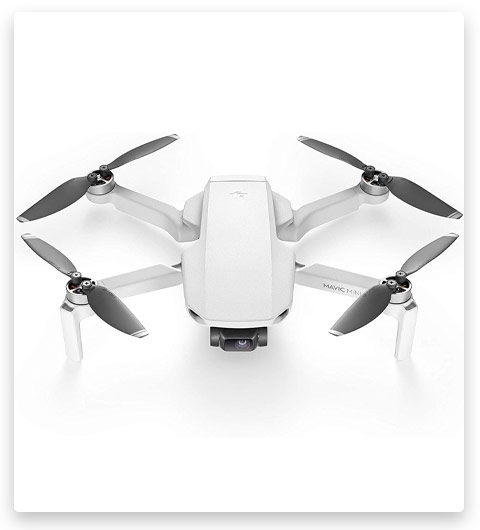

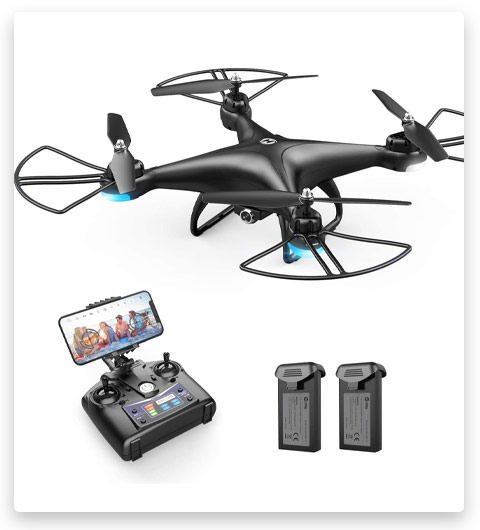
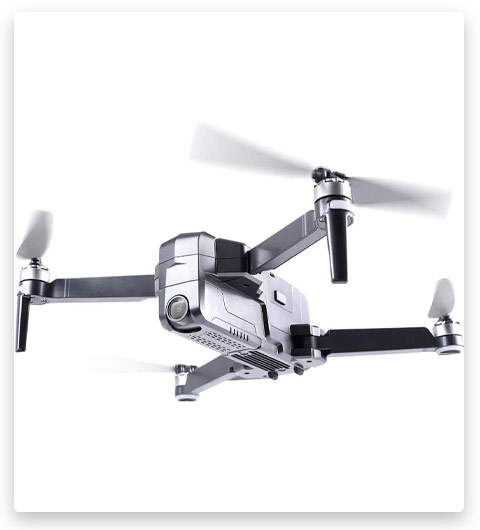
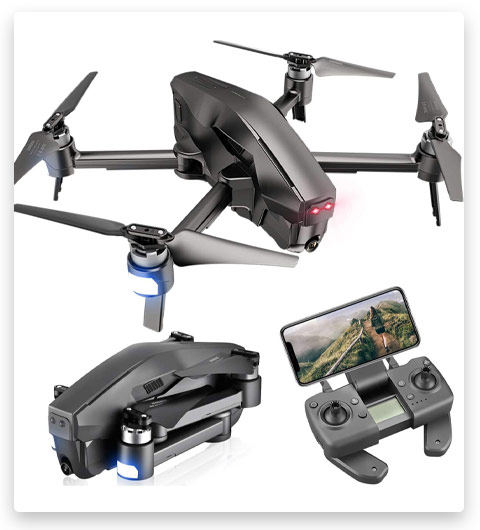
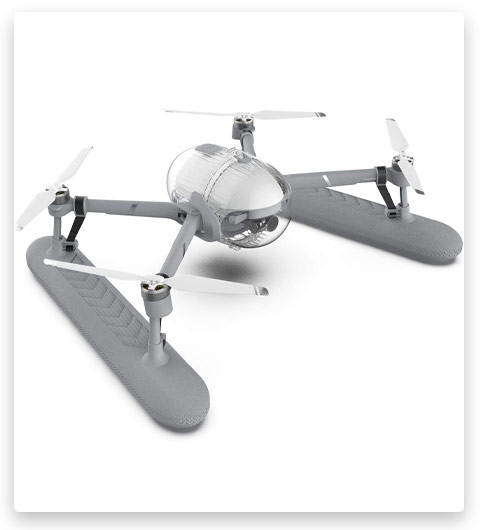
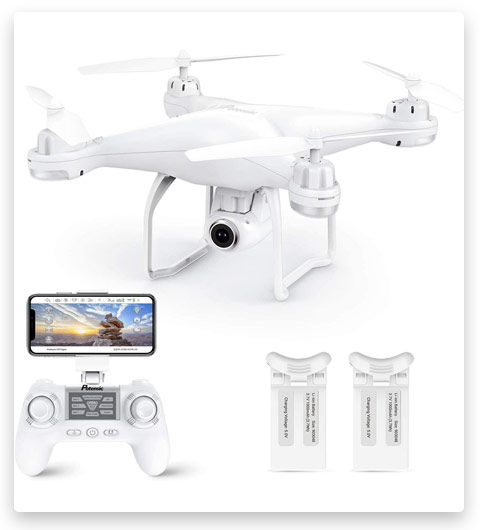
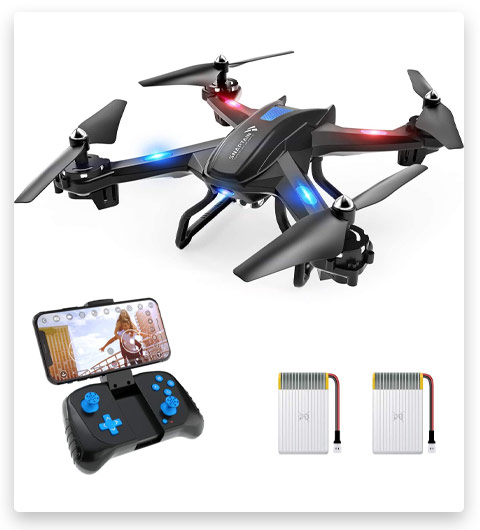
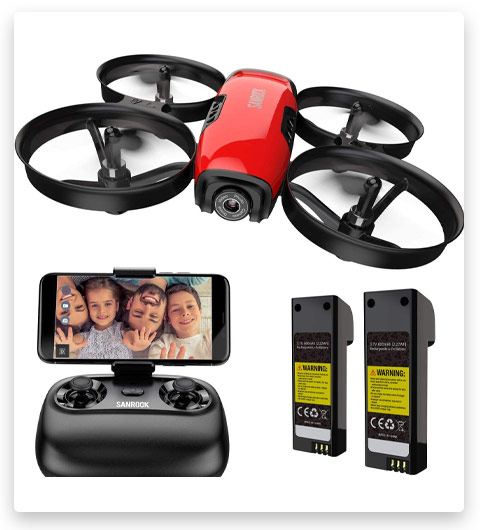
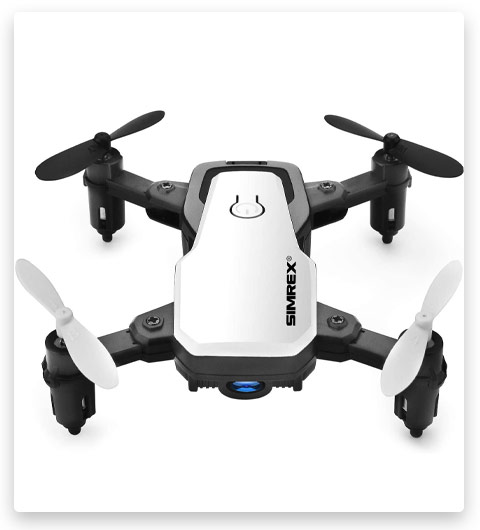
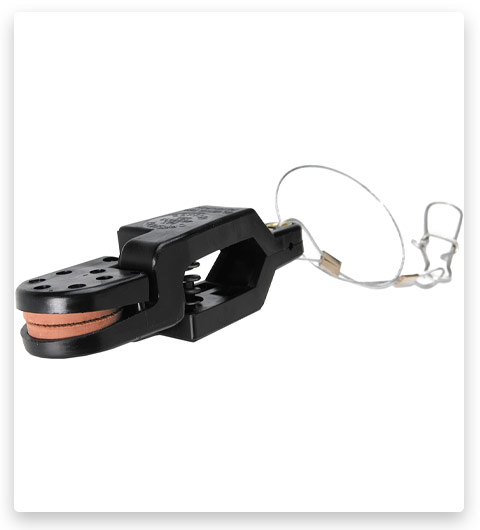
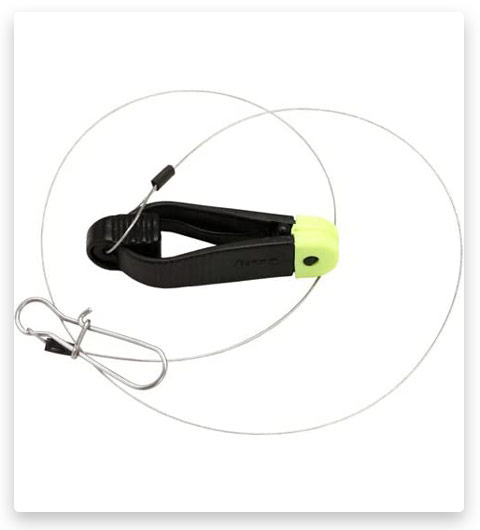
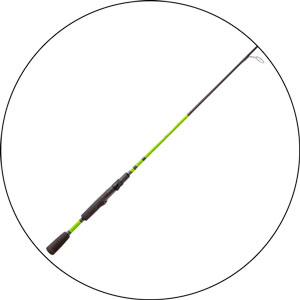
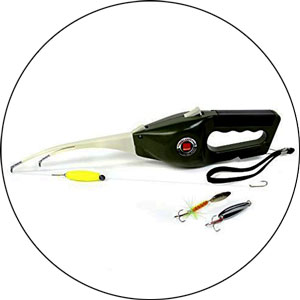
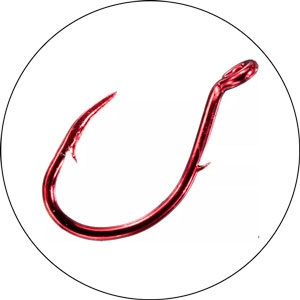
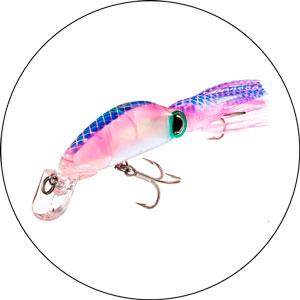
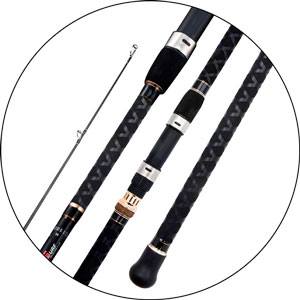

I recently discovered the wonders of fishing drones. These drones serve two main purposes when it comes to fishing: scouting from above to locate fish in the water, and dropping bait in areas that are otherwise difficult to reach.
Using a fishing drone has greatly improved my angling experience, as I’m able to get a bird’s eye view of the water and know exactly where to drop my bait. Additionally, I can cast my line much farther and reach places that were previously out of reach. The live aerial footage from the drone helps me to drop my bait precisely and increases my chances of catching fish.
I’m so excited to dive into the world of drone fishing! It’s the perfect way to combine my love of fishing with the thrill of flying a drone. And the best part? With the ability to scout out the perfect fishing spot from above and drop my bait with incredible precision, I’m sure to increase my chances of success on the water.
If you’re like me and ready to take your fishing game to new heights, you’ve come to the right place. In this comprehensive guide, we’ll cover everything you need to know to get started with drone fishing. From selecting the right equipment to navigating safety regulations, we’ve got you covered. So let’s get started and experience the excitement of drone fishing like never before!
Well, let me tell you about drone fishing. It’s a new way to fish that combines the excitement of flying a drone with the satisfaction of reeling in a big catch. With a drone, you can scout out the perfect fishing spot from above and drop your bait with pinpoint accuracy, increasing your chances of success on the water.
Now, when it comes to selecting the right drone for fishing, there are a few things to consider. First, you’ll want to look for a drone with a strong enough motor to carry your bait out to the water. Additionally, you’ll want to make sure the drone has a good camera so you can scout out the fish and drop your bait in the right spot. Some popular options for drone fishing include the DJI Mavic 2 Pro and the Autel Evo II.
But it’s not just about the drone itself. You’ll also need to consider the accessories, like a bait release mechanism, to make sure you can drop your bait with precision. And of course, you’ll need to make sure you’re following all safety regulations and guidelines for drone use.
I’ve always assumed that drone fishing was a great way to get my lure out as far as my reel will reach, drop it and slowly bring it in, especially when I’m fishing from the shore or beach. It’s a great way to reach the deep areas that I would normally need a boat to get to.
To me, this just makes more sense and I really wish I had a drone to do this when I go to the beach in a few weeks. Not only would it be convenient, but it would also add an extra element of excitement to my fishing experience.
I can definitely see myself using a drone for beach fishing so I can drop my bait past the breakers or on a specific hard-to-reach spot. Additionally, it would be a great tool to have when I’m ocean tuna fishing and the fish are boiling on the surface.
Overall, I think drone fishing is a great way to take your fishing game to the next level. I’m definitely excited to try it out for myself and see how it can enhance my fishing experience.
I recently learned about the concept of using a drone for tuna fishing and it’s blown my mind. The idea is to only use the drone when the tuna are boiling or foamers. Say you’re on a boat and you see this happening – a lot of the time, you’re out of position. Boats move slowly, sometimes you’re anchored and you have a very small time window to get your bait in the water. That’s where the drone comes in handy.
When there is a feeding frenzy going on, the fish will literally eat a hook with no bait if you drop it on top of them. That’s where the drone comes in handy. You can quickly fly it to the area and drop your bait on top of the fish, increasing your chances of catching one.
I have never tried this before, but I’ve seen a decent amount of videos on YouTube where it actually works. Honestly, I didn’t even consider the noise of the drone, but I don’t think it matters when the fish are in a feeding frenzy. However, I’m wondering if I should invest in some low-noise propellers to make it less intrusive.
As a drone enthusiast, I believe DJI makes the best drones on the market. They offer a range of different drones at various price points, which is great for those looking to invest in a drone for fishing purposes. However, for fishing out at sea, one of their larger drones would probably work better as it can cope with the weight better and handle high winds. The Mavic 2 line is a great option, but it’s also one of their more expensive drones.
It’s important to keep in mind that you’re not supposed to fly DJI drones in the rain as it can mess up the camera, leaving you flying blind and unable to spot fish. So, if you plan on fishing in the rain, you’ll need to be extra careful with water.
Battery life is another major issue to consider. It’s important to remember that 20 minutes of battery life doesn’t equal 20 minutes of flight time, especially over water where you’ll want to bring back the drone with at least 10 minutes remaining. This means you only have around 10 minutes to fish. Therefore, battery life is a critical issue and you’ll need something with at least 30 minutes in my opinion.
I have personally tried using a drone for beach fishing by attaching a hook to the underside of the drone and flying the lure out to the desired spot. It’s a simple and effective technique, but it’s important to keep the drone out of the water.
However, I would still suggest looking for a splash drone for fishing on a boat. I was able to find a cheap 3+ model on eBay, and it’s been a great investment. With a splash drone, you don’t have to worry about landing accurately on the boat, as it can land in the water and be flown back when you’re ready.
I can see how landing a regular drone on a boat could be difficult, and one mistake could mean losing the drone altogether. With a splash drone, you can even leave it in the air to capture footage while you’re reeling in that big catch.
As someone who loves both tuna fishing and flying drones, I have to say that drone fishing may not be as practical as it sounds. While it is possible to rig up a DJI drone to release your line, it requires some DIY modifications that may not be ideal for most people.
When it comes to tuna/mackerel fishing, we are usually cruising around looking for birds or the fish themselves on the horizon. We are constantly on the move and not anchored in one spot. It would be difficult to reel in a tuna while also trying to land a drone back in the boat.
Moreover, doing it alone could be quite challenging. Personally, I am not comfortable with the idea of trying to handle a tuna while also landing a drone back in the boat.
If you really want to try drone fishing, your best bet would be to use a purpose-built drone for the task.
As an owner of the DJI Mavic Mini 2 combo pack, I have to say it’s been an awesome investment. At around $600, it’s definitely not the cheapest drone on the market, but it’s proven to be incredibly tough. I’ve crashed it a few times and only had to replace the blades.
I’ve also bought my kids a few cheap drones in the past, but they just weren’t worth the money. The build quality was poor and they didn’t last long.
While I mainly use my DJI Mavic Mini 2 for fun, flying it around the backyard while enjoying a cold beer, it’s capable of so much more. The camera quality is great and it’s incredibly easy to control. Overall, I highly recommend it.